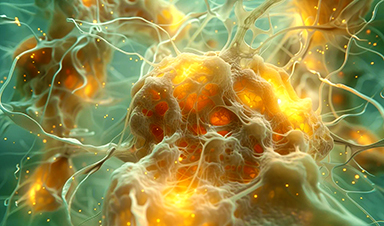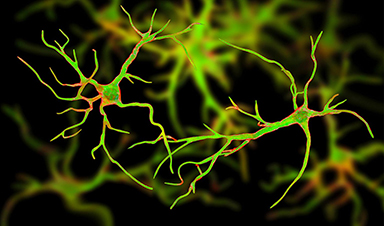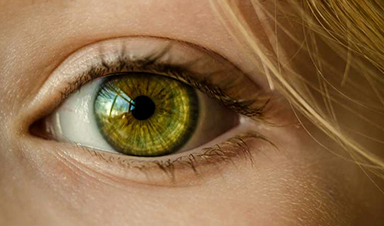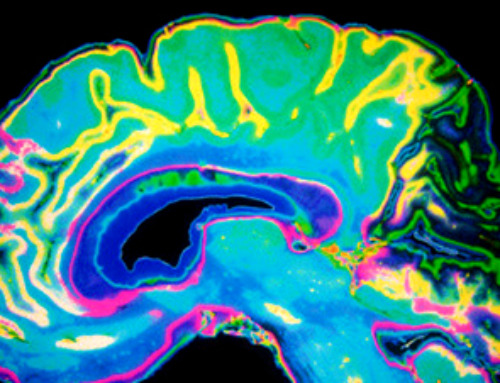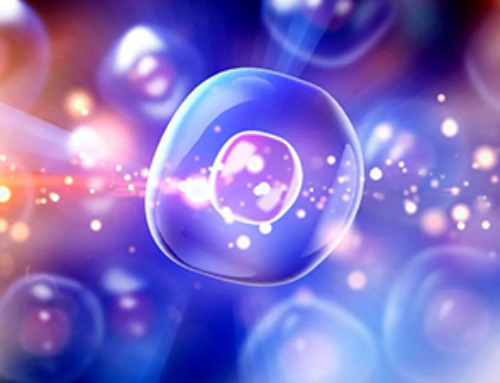Researchers have uncovered how certain genetic mutations lead to unique spherical amyloid plaques in inherited forms of Alzheimer's, offering insights that could advance our understanding of the disease and improve therapeutic strategies.
An international collaboration led by RIKEN researchers has discovered how unusual spherical structures form in the brains of people with a mutation that causes a form of inherited Alzheimer's disease. This discovery could help better understand the mechanics of the debilitating neurodegenerative disease.
Why Alzheimer's disease strikes some people but not others is still largely mysterious. But in about one percent of cases that reason is clear—the person has inherited one of a handful of mutations that cause familial Alzheimer's.
"The inherited form of Alzheimer's disease can be caused by mutations to the gene that encodes for the amyloid precursor protein," explains Yoshitaka Ishii of the RIKEN Center for Biosystems Dynamics Research.
Amyloid Fibrils and Alzheimer's Research
Some of these mutations promote misfolding of the amyloid beta peptides into fibrillar aggregates, which are amyloid beta molecules clumped together in strings. Such amyloid beta fibrils are one of the hallmarks of all forms of Alzheimer's disease, although their structures vary according to the disease variety.
Discovering the structures of amyloid fibrils of amyloid-beta peptides could shed light on how the disease develops. It could help with developing ways to prevent or treat the condition.
"Amyloid fibrils are key drug targets for antibody therapies for Alzheimer's," says Ishii. "It's thus important to determine their structures."

Structural Insights From Arctic Mutation Analysis
Now, Ishii and co-workers have prepared samples of amyloid beta fibrils produced by the Arctic mutation—so called because it was first found in Scandinavia. They then used cryo-electron microscopy and solid-state nuclear magnetic resonance (NMR) to determine its structure.
"While Alzheimer's patients with the Arctic mutation exhibit similar symptoms as people with regular Alzheimer's, the pathological features are unique," says Ishii. "For example, a distinctive type of amyloid plaque called cotton wool plaque is often observed."
Cotton wool plaques are large, spherical plaques. "In Alzheimer's patients with the Arctic mutation, cotton wool plaques can be 200 micrometers in diameter, which is ten times larger than a typical plaque," explains Ishii. "But no one knew how these unique features were produced."
Potential Impact on Alzheimer's Therapy
Ishii's team's structural analysis has now revealed how cotton wool plaques may be formed by the mutation. "We've demonstrated that the unique W-shaped structure of amyloid fibrils produced by the Arctic mutation reproduces the major features of cotton wool plaques," says Ishii.
Ishii and his team hope this kind of structural analysis will help Alzheimer's research on two fronts.
"We believe that experimentally creating amyloid fibrils, which mimic the fibrils in various subtypes of Alzheimer's disease, will reveal the complex mechanisms of Alzheimer's," says Ishii. "This direction should also provide good potential targets for antibody or other therapies for the disorder."
Reference: "E22G Aβ40 fibril structure and kinetics illuminate how Aβ40 rather than Aβ42 triggers familial Alzheimer's" by Mohammad Jafar Tehrani, Isamu Matsuda, Atsushi Yamagata, Yu Kodama, Tatsuya Matsunaga, Mayuko Sato, Kiminori Toyooka, Dan McElheny, Naohiro Kobayashi, Mikako Shirouzu and Yoshitaka Ishii, 15 August 2024, Nature Communications.
DOI: 10.1038/s41467-024-51294-w
News
A single shot of HPV vaccine may be enough to fight cervical cancer, study finds
WASHINGTON -- A single HPV vaccination appears just as effective as two doses at preventing the viral infection that causes cervical cancer, researchers reported Wednesday. HPV, or human papillomavirus, is very common and spread [...]
New technique overcomes technological barrier in 3D brain imaging
Scientists at the Swiss Light Source SLS have succeeded in mapping a piece of brain tissue in 3D at unprecedented resolution using X-rays, non-destructively. The breakthrough overcomes a long-standing technological barrier that had limited [...]
Scientists Uncover Hidden Blood Pattern in Long COVID
Researchers found persistent microclot and NET structures in Long COVID blood that may explain long-lasting symptoms. Researchers examining Long COVID have identified a structural connection between circulating microclots and neutrophil extracellular traps (NETs). The [...]
This Cellular Trick Helps Cancer Spread, but Could Also Stop It
Groups of normal cbiells can sense far into their surroundings, helping explain cancer cell migration. Understanding this ability could lead to new ways to limit tumor spread. The tale of the princess and the [...]
New mRNA therapy targets drug-resistant pneumonia
Bacteria that multiply on surfaces are a major headache in health care when they gain a foothold on, for example, implants or in catheters. Researchers at Chalmers University of Technology in Sweden have found [...]
Current Heart Health Guidelines Are Failing To Catch a Deadly Genetic Killer
New research reveals that standard screening misses most people with a common inherited cholesterol disorder. A Mayo Clinic study reports that current genetic screening guidelines overlook most people who have familial hypercholesterolemia, an inherited disorder that [...]
Scientists Identify the Evolutionary “Purpose” of Consciousness
Summary: Researchers at Ruhr University Bochum explore why consciousness evolved and why different species developed it in distinct ways. By comparing humans with birds, they show that complex awareness may arise through different neural architectures yet [...]
Novel mRNA therapy curbs antibiotic-resistant infections in preclinical lung models
Researchers at the Icahn School of Medicine at Mount Sinai and collaborators have reported early success with a novel mRNA-based therapy designed to combat antibiotic-resistant bacteria. The findings, published in Nature Biotechnology, show that in [...]
New skin-permeable polymer delivers insulin without needles
A breakthrough zwitterionic polymer slips through the skin’s toughest barriers, carrying insulin deep into tissue and normalizing blood sugar, offering patients a painless alternative to daily injections. A recent study published in the journal Nature examines [...]
Multifunctional Nanogels: A Breakthrough in Antibacterial Strategies
Antibiotic resistance is a growing concern - from human health to crop survival. A new study successfully uses nanogels to target and almost entirely inhibit the bacteria P. Aeruginosa. Recently published in Angewandte Chemie, the study [...]
Nanoflowers rejuvenate old and damaged human cells by replacing their mitochondria
Biomedical researchers at Texas A&M University may have discovered a way to stop or even reverse the decline of cellular energy production—a finding that could have revolutionary effects across medicine. Dr. Akhilesh K. Gaharwar [...]
The Stunning New Push to Protect the Invisible 99% of Life
Scientists worldwide have joined forces to build the first-ever roadmap for conserving Earth’s vast invisible majority—microbes. Their new IUCN Specialist Group reframes conservation by elevating microbial life to the same urgency as plants and [...]
Scientists Find a Way to Help the Brain Clear Alzheimer’s Plaques Naturally
Scientists have discovered that the brain may have a built-in way to fight Alzheimer’s. By activating a protein called Sox9, researchers were able to switch on star-shaped brain cells known as astrocytes and turn them into [...]
Vision can be rebooted in adults with amblyopia, study suggests
Temporarily anesthetizing the retina briefly reverts the activity of the visual system to that observed in early development and enables growth of responses to the amblyopic eye, new research shows. In the common vision [...]
Ultrasound-activated Nanoparticles Kill Liver Cancer and Activate Immune System
A new ultrasound-guided nanotherapy wipes out liver tumors while training the immune system to keep them from coming back. The study, published in Nano Today, introduces a biodegradable nanoparticle system that combines sonodynamic therapy and cell [...]
Magnetic nanoparticles that successfully navigate complex blood vessels may be ready for clinical trials
Every year, 12 million people worldwide suffer a stroke; many die or are permanently impaired. Currently, drugs are administered to dissolve the thrombus that blocks the blood vessel. These drugs spread throughout the entire [...]
